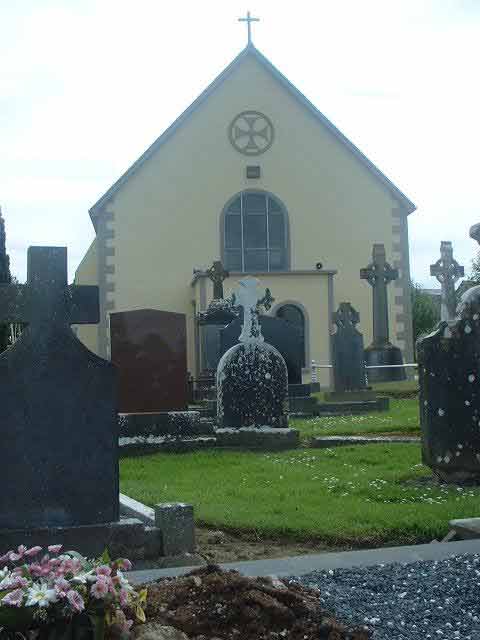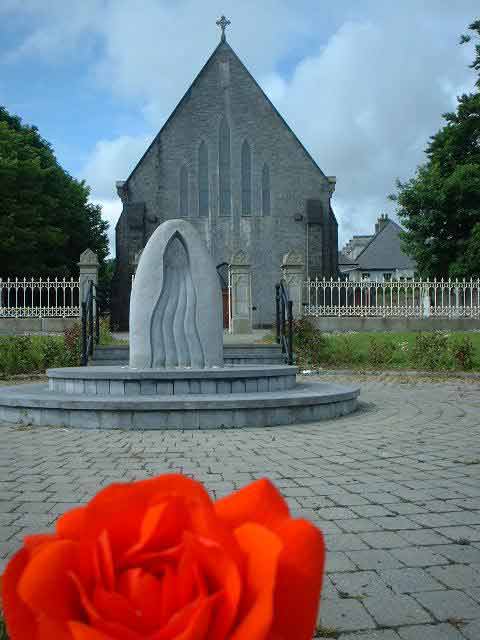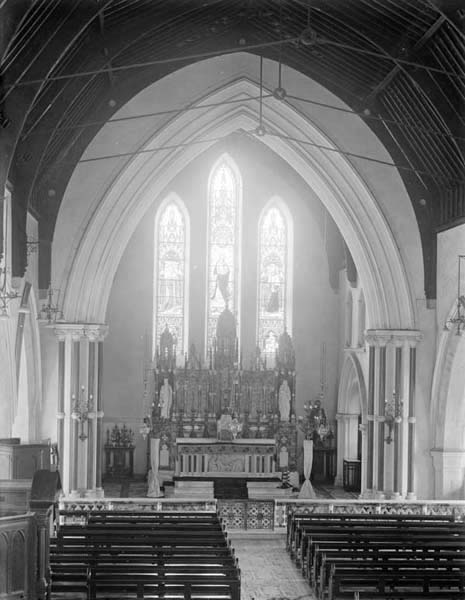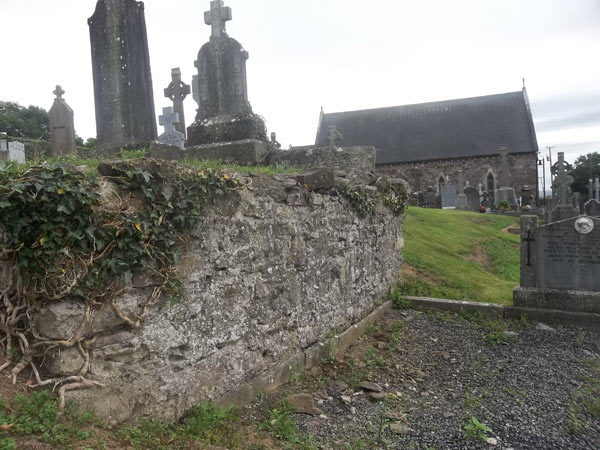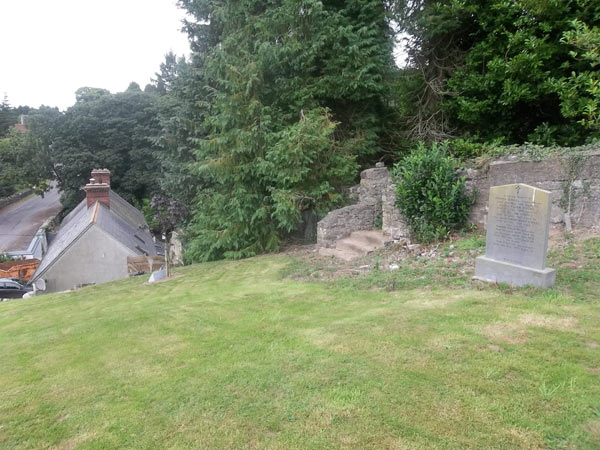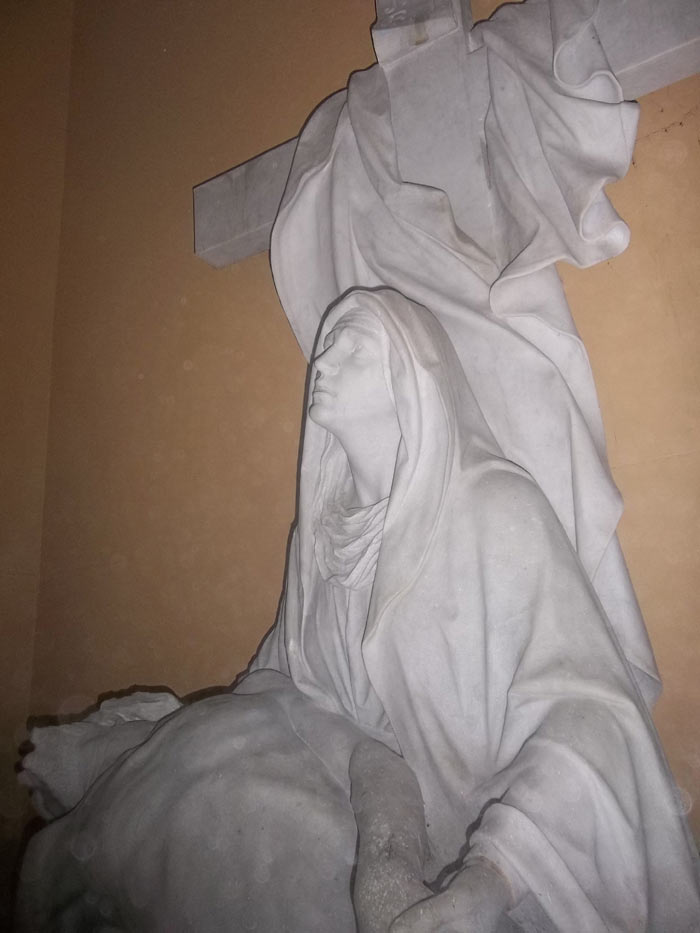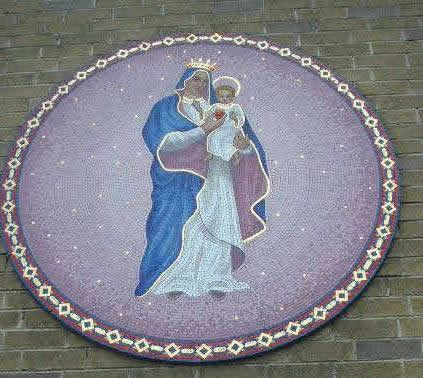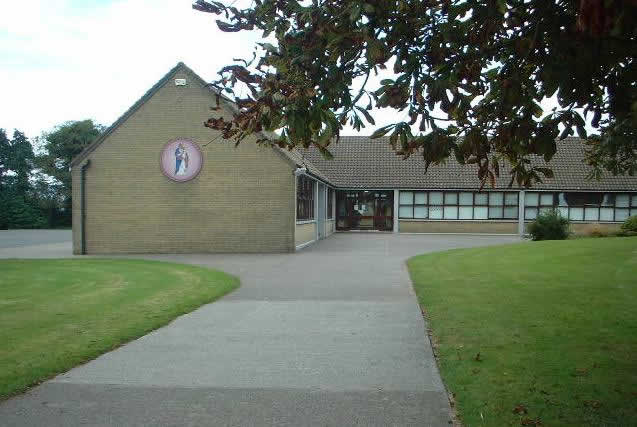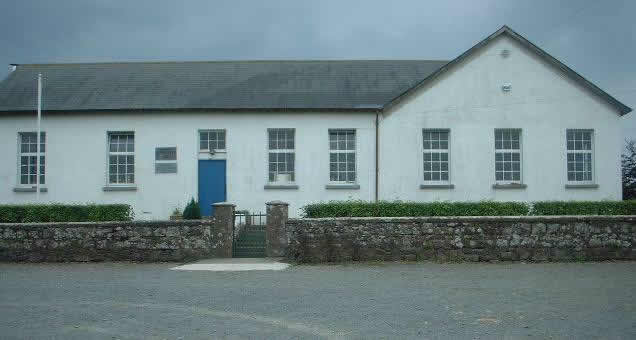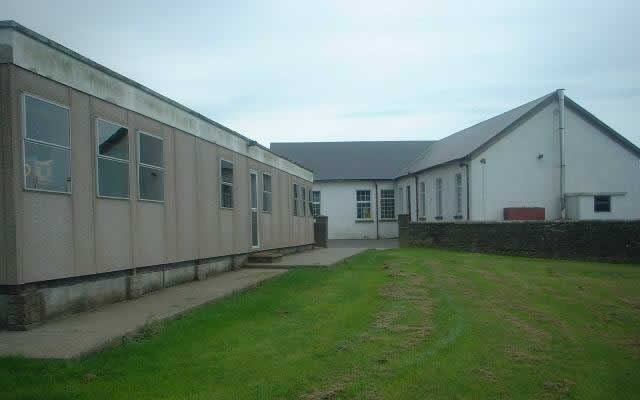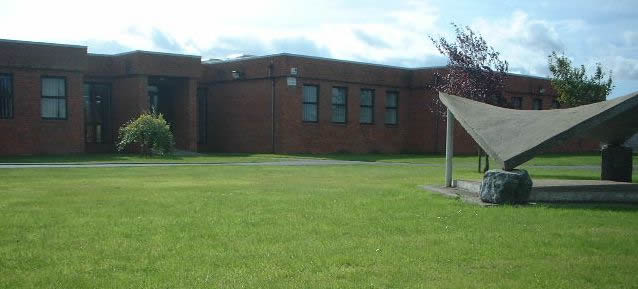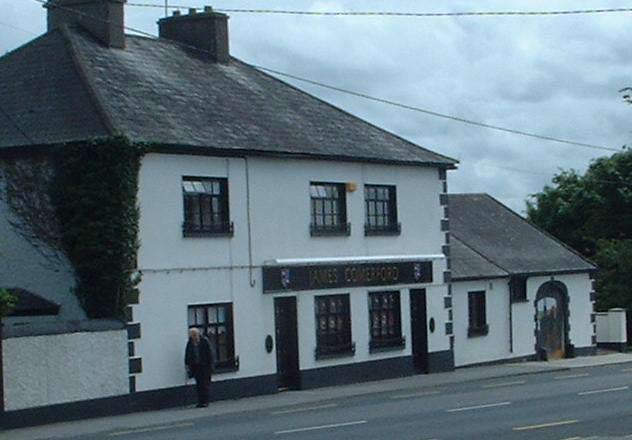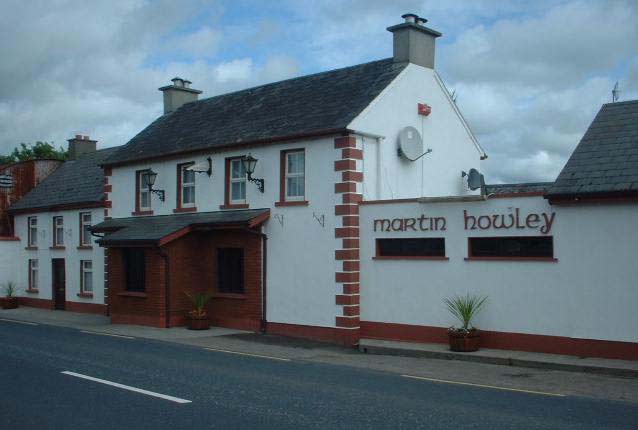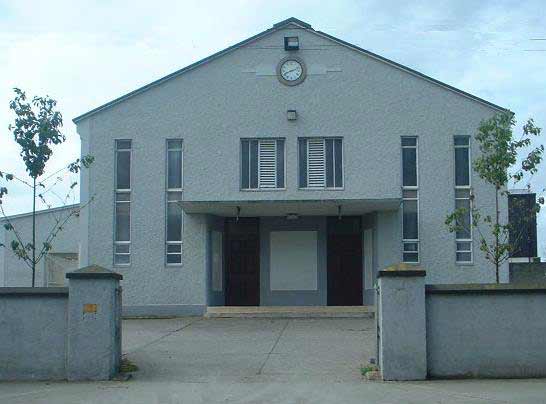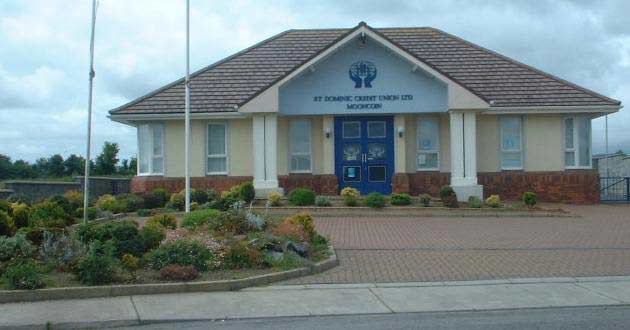
|
|
|
|
|
|
|
|
|
|
|
|
Information Page
|
Index
|
| 1. General Information |
| 2. Churches |
| 3. Schools |
| 4. Shops |
| 5. Pubs |
| 6. Parish Hall |
| 7. Other Amenities |
| 8. Map of Mooncoin |
Mooncoin parish is situated south County Kilkenny, which is in the southeast of Ireland. It is eight miles from Waterford City and 30 miles from Kilkenny City. The main road from Waterford to Limerick passes through Mooncoin village (N24). The River Suir flows to the south of the parish and acts as natural border with County Waterford on the opposite side. The population of Mooncoin parish (Carrigeen, Mooncoin, Kilnaspic) is 2,800 people (approx) and the parish is made up of circa 15,000 acres.
'Mooncoin' comes from the Irish 'Móin Choinn', which means 'Quinn's Bog' ('Moin' presently means turf/peat in the Irish language). The land/bog behind the present day Garda station was said to be owned or at least rented by a Quinn. So hence 'Quinns Bog'. Although some people think it may also be a reference to 'Coyne' Walsh, who lived in the area at Grange Castle. Either way, this is how 'Mooncoin' got its name, 'O Coinn' being Irish for 'Quinn' and then re anglicised as 'Coin'. It was basically phonetically written down in english as the locals would say it in Irish. So the two words, 'Móin Choin' being written in english as one word phonetically. Many Irish place names were named this way, mostly famously/infamously 'Dublin', coming from the joining together of 'dubh' and 'linn'.
It was said that the land was so marshy in the Quinn's bog area a lake would form in wet winter weather and people rowed across from place to place! This wet area continued either side of where the New Road is now, so behind where Comerfords pub/the Garda station is now. As is the case with how Carrigeen gets its name, 'Mooncoin' was basically just a 'field name'. In older records, pre 1700s, Mooncoin does not exist and was not its own townland. What is now Mooncoin village was in the townland of Ballytarsney, with the present day church side being in Polerone townland, while the Mooncoin Heights area was in Filbuckstown. As the village grew in the late 1700, commencing around Chapel Street, the area became locally known as 'Mooncoin', as that was the field name behind Chapel Street and to distinguish it from Ballytarsney village. The building of the parish church in Chapel Street around 1800 was a game changer. Similarly, as road transport began to replace river transport, one end of Chapel street found itself on the main road from Waterford to Carrick on Suir and beyond. Mooncoin village really came into its own with the daily passing of the Bianconi stage coach in 1815 (pulled by horses of course), which passed through as it made its way from Waterford to Cahir via Piltown and Carrick. For those with a little money, this made the world a much smaller place, with day trips to Waterford or Carrick on Suir, or even a one way ticket to Waterford port to get to the US/Canada much simpler. Previously, the most common way was by foot.
In addition, prior the 1800s, boats were the easiest way to travel. Boats left Carrick every day travelling to Waterford, stopping in Polerone and other places for passengers along the way, a journey that could take over four hours, the curve around Carrigeen adding to the time! Of course this was all based on the tides, the time the river was coming in and going out everyday. It's also why Granny Castle and Ormonde Castle in Carrick - along with the numerous tower houses along the river - were built in the first place many centuries ago. Whoever controls the river controlled the area, economically and otherwise. People didn't travel long journeys by roads, as they were primitive, sometimes dangerous, and most people didn't have a horse or donkey.
View from behind Comerford's and the old graveyard. Around this area is where the original Quinn's/Coynes Bog would have been (thus, how Mooncoin got its name). A water spring is still there. The land in this area is mostly drained now but still liable to get very wet. |
Mooncoin Catholic parish is split
up into three sub-parishes.
These are:
-
Mooncoin
-
Kilnaspic
-
Carrigeen
At present, there are three Roman Catholic churches in use in Mooncoin. These are Mooncoin, Kilnaspic (Killinaspick) and Carrigeen. Mooncoin church is situated on the main street in Mooncoin village and is known as the Church of the Assumption. Kilnaspic church, located five miles from Mooncoin village, is dedicated to St. Killogue. Carrigeen church is situated in Carrigeen village, three miles from Mooncoin village and is dedicated to St. Kevin. Like most of Ireland, religion played a massive role in the lives of the people of the parish through the years. Mooncoin parish has actually given more people to the religious life (priests, nuns etc.) than any other parish in the diocese of Ossory. For many years, Mooncoin had three priests stationed in the village (one for each church). This ended in 1997 and from 2006 there has been just one priest in the parish.
History of Churches:
Mooncoin (Church of the Assumption):
Mooncoin Church is the parish church, built in the victorian Gothic style, it is the biggest of the three in the parish (and also one of the biggest churches in County Kilkenny). It replaced the parish church that was in existence on Chapel Street where the 'old graveyard' is presently located. This church was built in 1802, it is how 'Chapel' Street got its name. No ruins remain, and graves are now in the area where the church was, with the entrance to the church being just inside the present day old graveyard gates. What evidence we have seems to suggest the church looked more like what Owning church looks like today, which was built around the same time - with two transepts/wings and with clear glass widows.The current parish church was started in the summer of 1867 on a 'green field site' bought by the local parish priest, Fr Ned Walsh, from J McEnery. There were five houses, a forge, and a mass bush located roughly where the present front entrance is. These were levelled and cleared, and the families were rehoused by the priest. All the digging and laying of foundations were carried out by volunteers from the parish, with each team given a 6x6x6 area to work on. The first man to have his 6 feet by 6 feet plot dug was Thomas Maher of Riverquarter who had his section done by 2.00 pm after an early start. When dug, the foundations of the church were 'still on clay'. It was decided to let the foundations dry out for three months and then slate and mortar the bottom. This was a costly mistake as the walls bulked under the pressure less than 20 years later (the walls were 10 inches out of plumb) and had to be re-supported at great cost. The limestone for the church came from Ballykillaboy and a softer limestone for the interior came from Aglish. The stone in the front piers is of Carlow granite. The roof had red slate originally but was re-slated in 1900. A line of the old red slate can still be seen. The convent was started at the same and proceeded as one with the church, replacing the old convent on Main Street, Mooncoin. It was designed by architect John Walker of Castlecomer. There was already, however, a convent school for young boys and girls at the Polerone side of the church (current pedestrian entrance to the new graveyard), built in the 1830s.
Mooncoin church was opened officially on the feast of the Assumption, 15th August 1870, with Mass celebrated by the Bishop of Ossory (the bishop, Dr Edward Walsh, was born in Luffany in Mooncoin parish and his nephew was the parish priest, Ned Walsh, who led the building of the church). The total cost of the church including furniture was £3,405 and the convent and new school (opened in 1871) cost £1,252. However on opening day in 1870, £500 was reported has having been collected through donations, which was a massive sum of money at the time. The parish priest Ned Walsh died in 1881 and was subsequently buried underneath the Blessed Virgin altar, which is to the right of the main altar inside the church.
In appearance, the church itself had the same layout as is there today. However, it would have looked a little more frugal as originally all the windows were clear glass and the altar, pulpit etc. were made of wood. There were originally large stations of the cross paintings along both walls. These were individually hand made by French artist S. Bonyngs and were commissioned and presented by the Bishop of Ossory, Dr Walsh (mentioned above) as a present on the completion of the church. They were a copy of the station paintings by the same artist which currently hang in St Mary’s Cathedral in Kilkenny City. However, in the 1960s, the then parish priest gave them away. The current stations of the cross were previously hanging in the Nagle chapel of the adjoining convent.
The most impressive part of Mooncoin Church is the three stained glass windows over the altar. These were made and designed in Germany and presented in 1893 by the Bishop of Toronto, Dr John Walsh. Bishop Walsh was born in Middlequarter and was taught by Watt Murphy in his school on Chapel Street. Walsh held many ministries throughout the Americas, subsequently becoming Bishop of Toronto. Many people in Mooncoin are so used to seeing these windows, they actually don't know who they depict. The central window is straightforward as its of the Sacred Heart, the one to the right is of St James and the lady on the left is St Ellen (Helen). These two saints seem to be unusual choices for Mooncoin but the reason was that Dr Walsh’s parents from Middlequarter were James Walsh and Ellen McDonald. Another reason these windows are so exceptional is that they, along with other works from the same company, won first prize (Fine Arts section) in the great Chicago fair of 1892 (held in the Field Museum, Chicago, Illinois). This was a massive world wide event held to celebrate 400 years since America was 'discovered'.
The original parish priest’s house on the main street was rebuilt in 1909 (and was demolished in 2005 and is now part of the GAA and parish hall parking). The curates of the parish lived in the old convent built in 1835 (known later as Dr Dwans) before moving to the parish priests house with the parish priest then moving to a house close to the 'tech', now Colaiste Cois Suire. Electricity was added to Mooncoin church by diesel generator in 1912. The Choir gallery stained glass windows were installed in 1914 donated by Dr Walter McDonald, Maynooth (born in Nicholastown). It depicts the fifteen mysteries of the rosary; Joyful, Sorrowful and Glorious. In 1916 and 1917 the altar rails and current altar were installed made from the finest Carrara marble (Italy). The altar is a copy of the altar in Maynooth priest training college. The two statues on the side altars were installed in 1925 as well as the current organ which cost £1000 (thus, the organ cost a third of the price of the original church). The exceptionally crafted pulpit, again in Carrara marble, depicts scenes from the life of Jesus and was installed at a cost of £1000 in 1930.
The below picture is of Mooncoin Church in August 1928 (click to enlarge). Notice on the left, the marble pulpit was not yet installed, as a wooden one was still in place. Also, the altar is pushed back onto the end wall as before Vatican II the priest would say the mass with his back to the people (looking up towards the windows/tabernacle). The altar was moved out from the wall so the priest could face people after Vatican II (the Mass was also switched to English from Latin at the time). The altar rails in front were also removed at this time. Some of the marble left over from this was used to make altar chairs, one of which is still in use today.
Kilnaspic (St Killogues):
Predates Mooncoin by four years making it the oldest of the current churches. It was built by the same Fr Ned Walsh who built Mooncoin and was used as a test and template for the bigger church. Kilnaspic is basically a smaller version of Mooncoin church (excluding the two transepts). Like Mooncoin afterwards, it was built in the Gothic architectural style. This can be seen with all the 'pointed' arches over the windows and doors. Also, the main arch over the altar is pointed. The church was opened in 1866 and built by the Falconer brothers of Carrick on Suir. It replaced a church that was located just down the hill which was open in 1800, the remnants of which can still be seen towards the end of the present graveyard. The reason this older church only lasted 60 years was because it was damp and wet inside because of its location. This church was then predated before 1800 by a Mass House on the same site (with a thatch roof). Catholic churches were not allowed prior to the end of the 1700s, so a plain looking 'Mass House', not much more than a barn, was a way of circumventing the law. So there would have been three different churches around the current site. Therefore the graveyard was also in use before the current church was built. The church in Tubrid was a Church of Ireland chapel by the end of its life but was also dedicated to St Killogue.There was a parochial school located to the right of the present church (roughly where there is a ramp today) from at least the 1820s. In 1841 the Principal there was Michael Geoghan. During the same year, after the school became state financed, a second teacher was employed, Thomas Butler. After the school closed cir 1870, most of the pupils moved to Tobernabrone school and also Garygaug school in Mullinavat parish. Clogga school was then opened in 1888.
The stations of the cross in Kilnaspic church date from 1924 and were received from Rev T Corcoran born in Cloneen (still hung today and can be seen in the pictures below). In 1928 the current alter was installed with a donation from Peter Dunphy native of Tubrid, late of Australia. It was originally more impressive than it is today with marble decoration on the back wall and the alter pushed back onto the end wall. This was removed with the changes in Vatican II in the 1960s and never reinstalled. The altar, in white marble, is engraved with a replica of the Last Supper by Leonardo Da Vinci.
The most impressive piece of art in the church is the statue high behind the altar which was installed some years after the church was built (probably in the early 1900s, and an extension was built on to the church to house it). It is a likeness of Michelangelo's Pieta (with the addition of a cross and the fact that Mary is holding Jesus's hand), created with Carrara marble. It was made in Pietrasanta, Tuscany, Italy by a famous sculptor studio called Ferdinando Palla whose name is inscribed on the piece of art, as shown in the below photo. A picture of the sculptor at work in Italy is shown below also. Some of his work is on display in St Peter's in Rome.
Carrigeen (St Kevin's):
Carrigeen church was rebuilt on the site of a previous church in 1893 by parish priest Patrick Phelan. Some of the walls of the old church were likely used in the new one but extended and of course reroofed completely. The current church is the third church to be built on the site, the first being a 1750s Mass house. There are memorials inside the church today on the walls which were saved from the previous church and reinstated. There is an impressive bell located on the road side of the church which was installed in 1932 in memory of the Eucharistic Congress which took place in Dublin in that year (that Congress celebrated the 1500th anniversary of St Patrick coming to Ireland).The Grotto in Carrigeen was built in 1928, led by Fr James Power. In 1973 the stained glass windows in the church were modernised. The font at the door of Carrigeen church was saved by locals from the old Aglish church and is much older than Carrigeen church itself.There was a parochial run school at Carrigeen church since at least the 1830s which became a state school in 1839 with Edmond Quinn as principal.
There are two primary schools and one post primary school in the parish of Mooncoin. The former Presentation Girls School on the Carrick side of Mooncoin now the junior school while the former Scoil Muire Lourdes boys school at the Waterford end of the village is now the senior school (with over 250 students). The schools amalgamated in 2016 is now called Scoil Mhuire NS. In Carrigeen village there is the mixed national school (with over 100 students). From Carrigeen school it is possible, on a clear day, to see five counties, Tipperary (Slievenamon), Waterford (Comeraghs), Kilkenny, Carlow (Mt Leinster) and Wexford.
Coláiste Cois Súire (secondary school) serves the post-primary education needs of the area. It is also situated in village of Mooncoin and was opened in 1993 with the name change coming in 2001. Originally established as Technical School in 1935 - where the current day furniture shop is located - it is sometimes still affectionately known as 'the tech', with the previous principal Seamus Doran and teacher Denis Buckley well liked and remembered in the area.
Since the 2010s a playschool/Montessori is now also in the village, located in Roseleigh housing estate.
|
Former Presentation
Girls school, Mooncoin, now Scoil Mhuire junior school
|
St. Declans
primary School, Carrigeen
|
|
Former Scoil Mhuire
Boys school (opened 1920s) now Scoil Mhuire senior school
|
Còlàiste
Cois Sùire, Mooncoin - new school opened 1993, original school 1935.
|
There are, at present,
three general grocer shops/supermarkets in the parish of Mooncoin.
These are:
|
Shop
|
Location
|
| Centra supermarket | Main st, Mooncoin |
| Crokes | Chapel St., Mooncoin |
| Mooncoin Stores and Petrol Station | Main st, Mooncoin |
| Ryan's supermarket (Closed) | Carrigeen village |
There are two fast food takeaways (Mondo's was formerly Grace's) in the village.
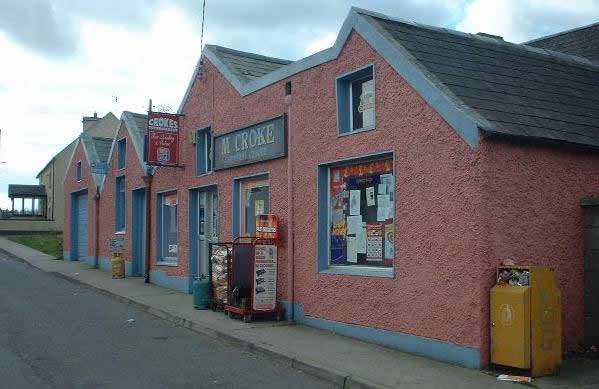 |
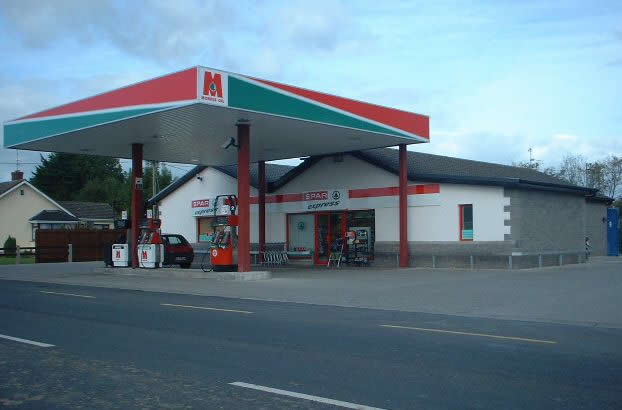 |
||
|
Croke's, a family run business since 1924, originally it started at the opposite end of Chapel Street |
Centra
|
Mooncoin Stores
|
Currently there are four Pubs in Mooncoin parish.
|
Pub
|
Location
|
| Comerford's (since 1776) | Main st., Mooncoin |
| The Royal Oak | Rathkieran, Carrigeen |
| The Rose of Mooncoin | Main st., Mooncoin |
| Walsh's | Carrigeen |
|
Comerford's
pub , Mooncoin
|
Howleys
pub, Mooncoin(now closed)
|
 |
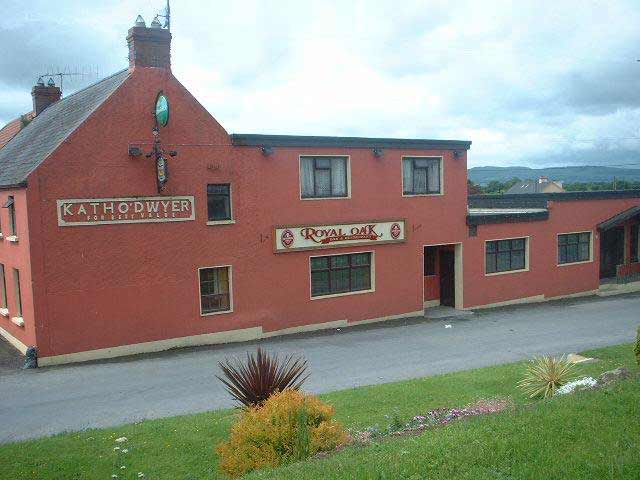 |
|
Walsh's, Carrigeen
|
Royal Oak,
Rathkieran
|
Mooncoin parish hall is located on the main street right in the heart of Mooncoin. It has been newly renovated after a fire which gutted most of the building some years ago. It is a great asset to the community with many gatherings, bingo and stage productions taking place there. It was first open in 1950 at a cost of £14,000. A new extension was built and opened in 2012 which has additional meeting and tea rooms. Films were shown here at the weekends when it was first built which were hugely popular and raised money for the parish. Dances and later discos also took place in the hall.
|
Parish Hall
|
Mooncoin has a range of other amenities including
-
A soccer pitch
- three hurling fields (Carrigeen GAA known as Asper Park, Mooncoin GAA)
-
Sports complex (including Gym)
-
Credit Union
- Astro-turf pitch in Mooncoin and Carrigeen along with meeting rooms
- Rose Cafe
-
Hairdresser's
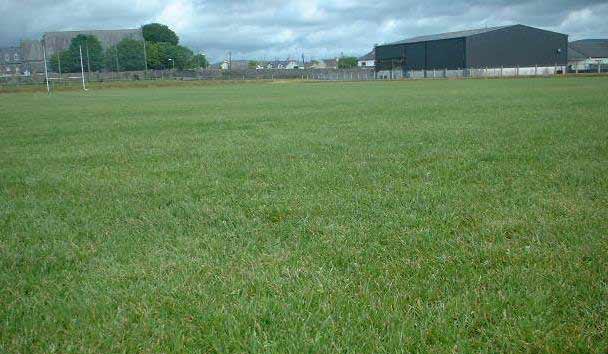 |
|
|
GAA
Field and Sports Complex & Gym, Mooncoin
|
Credit Union
|
Click on the map below to see an enlarged detailed map of Mooncoin parish.
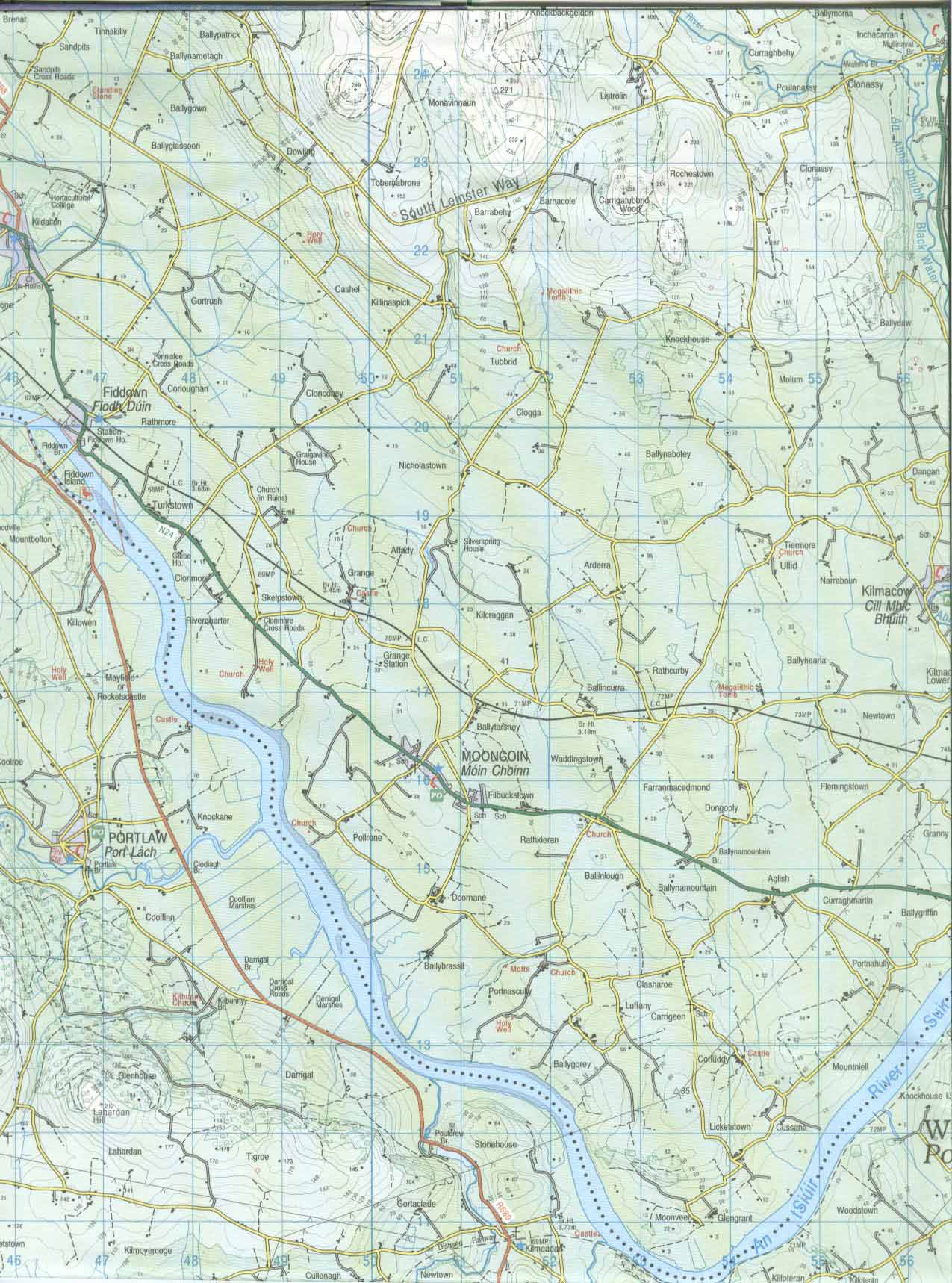 |
|
Map of Mooncoin
|


